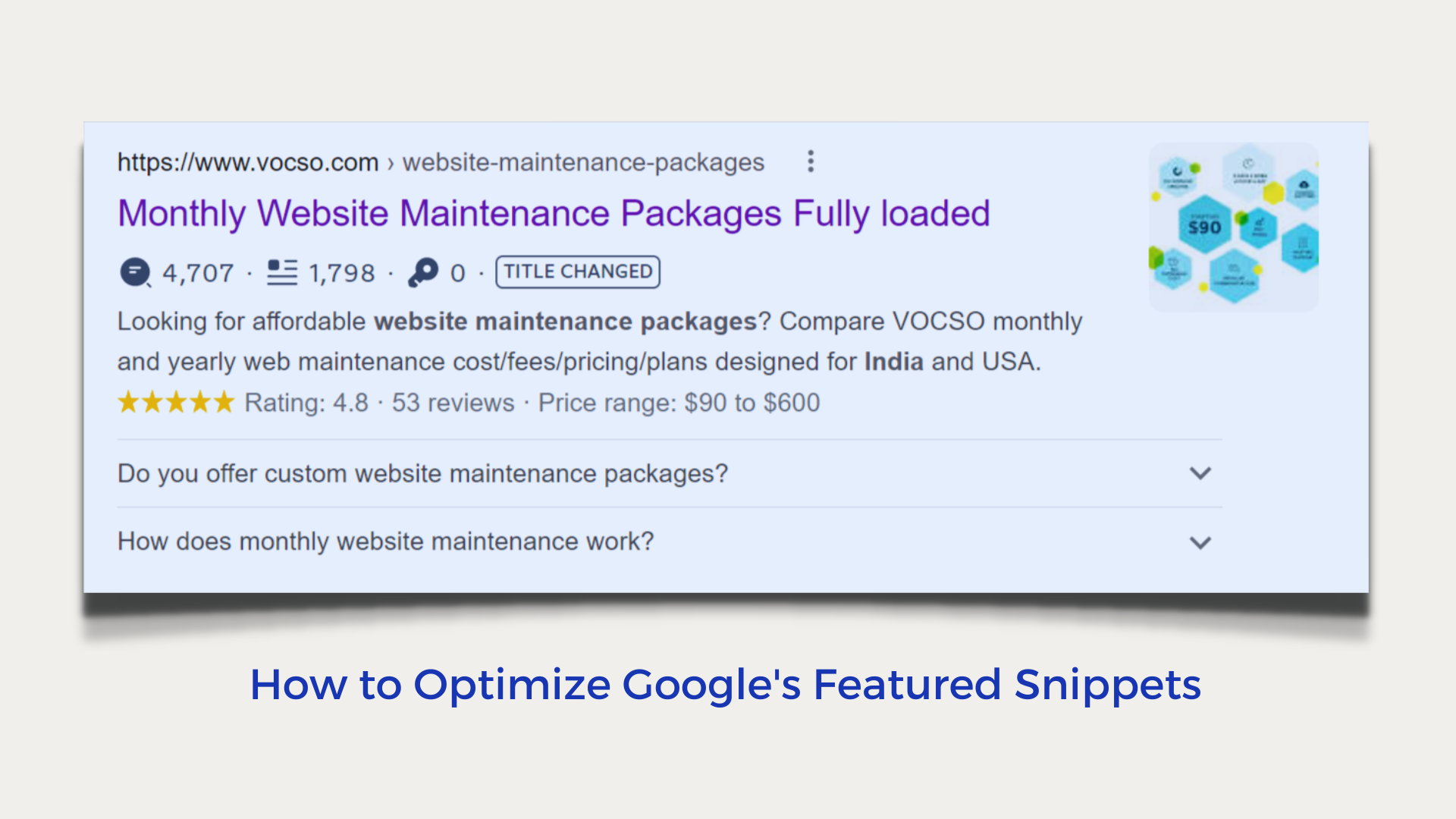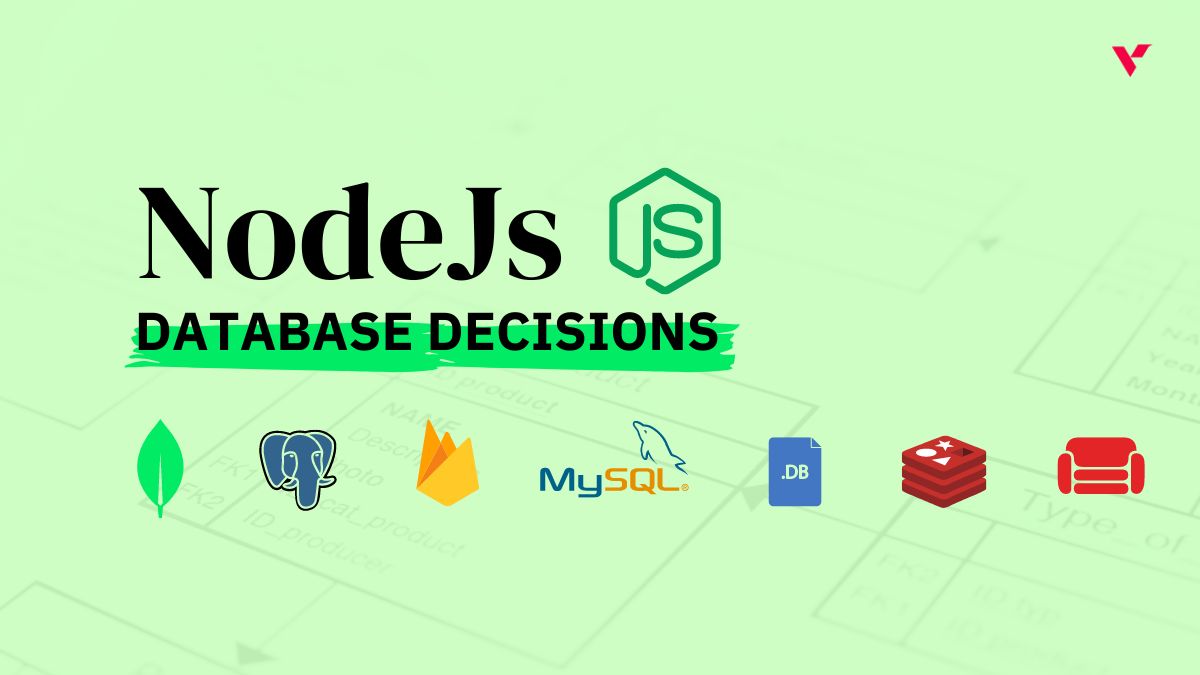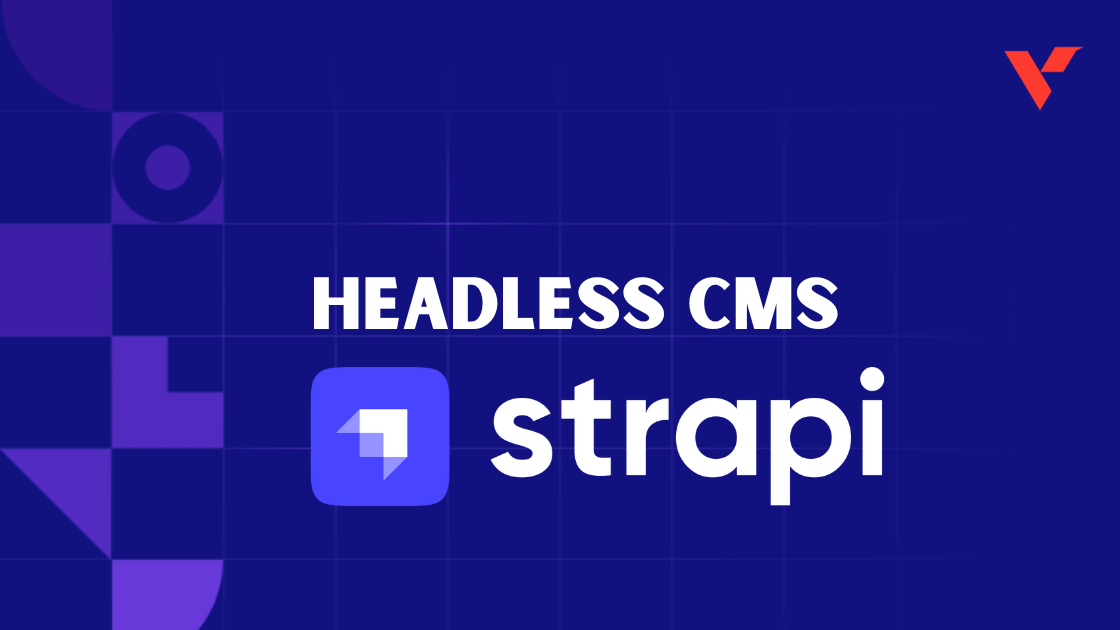Popular Tools by VOCSO
The popularity of Google’s featured snippets has been rising since its debut in 2014. According to a 2019 study, the number of Google’s featured snippets results has constantly been increasing each year.
If you run an online business, you probably want to rank first on the Search Engine Results Pages (SERPS). Every online business wants that.
However, getting to the first spot in Google’s organic search results is an uphill struggle due to the massive competition.
But just because the competition is fierce, it doesn’t mean you can’t win the featured snippets.
In this post, I’ll look at what featured snippets are, the types of featured snippets, and the basics of how to optimize them for featured snippets.
I hope you enjoy it.
Table of Contents
What are featured snippets?
Featured snippets or answer boxes are a summary of the content that appears in a box at the top of Google’s search results, above the first organic search results, and just below the ads.
They get approximately 35% of all clicks, and their primary purpose is to directly answer searchers’ queries in the search results.
Types of featured snippets
Generally, there are four main types of Google’s featured snippets that are well established in search. In our roundup of Google’s featured snippets, we’ll explore the four types, how they look in search results, and the type of search questions that best suit them.
1. Paragraph Featured Snippets
A paragraph snippet is the most standard type and presents brief information about the topic in search. It provides the answer in the form of text in a box, and sometimes an image is placed inside the box along with the text.
If you’re looking to boost your click-through rates, then optimizing for paragraph snippets is the perfect solution. This is because these types of snippets aim to answer the searchers’ questions immediately, including information that sparks their interest and prompts them to click through.
It answers questions like
- What is
- How to
- Why
- Who
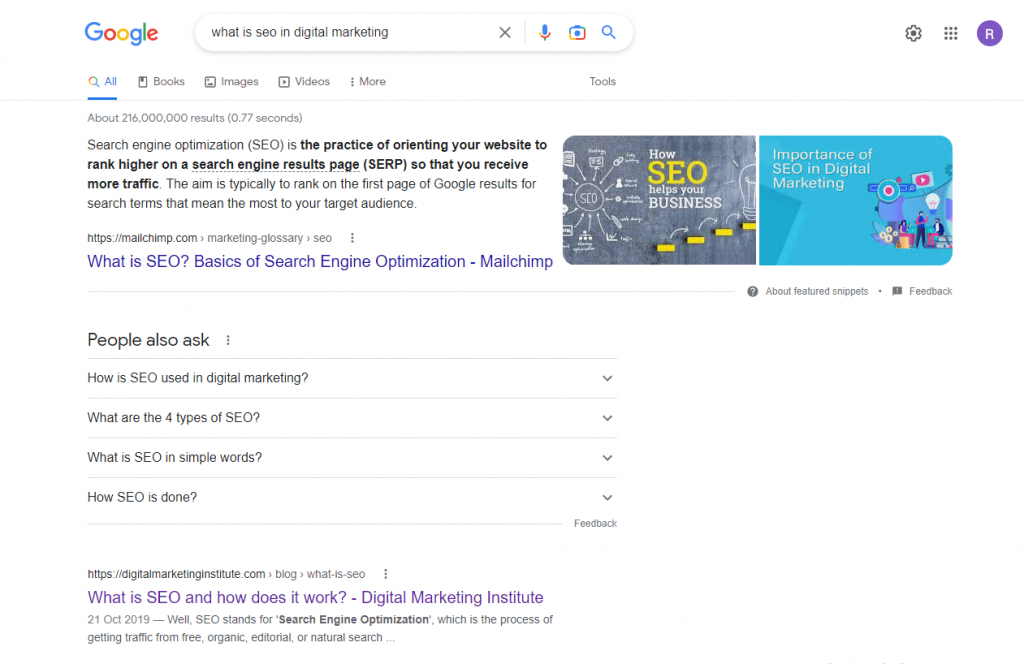
2. Listicle Featured Snippets
These types of snippets display steps to a process, a list of items, types of products, etc. They organize and present information in an orderly and specific way. It could be in the form of a numbered list or bulleted points. Typically, Google uses HTML elements from your site to create lists.
- Google favors the listicle snippets for
- Recipes,
- Checklists,
- Questions that require instructions like how to or how to do I
- DIY tasks
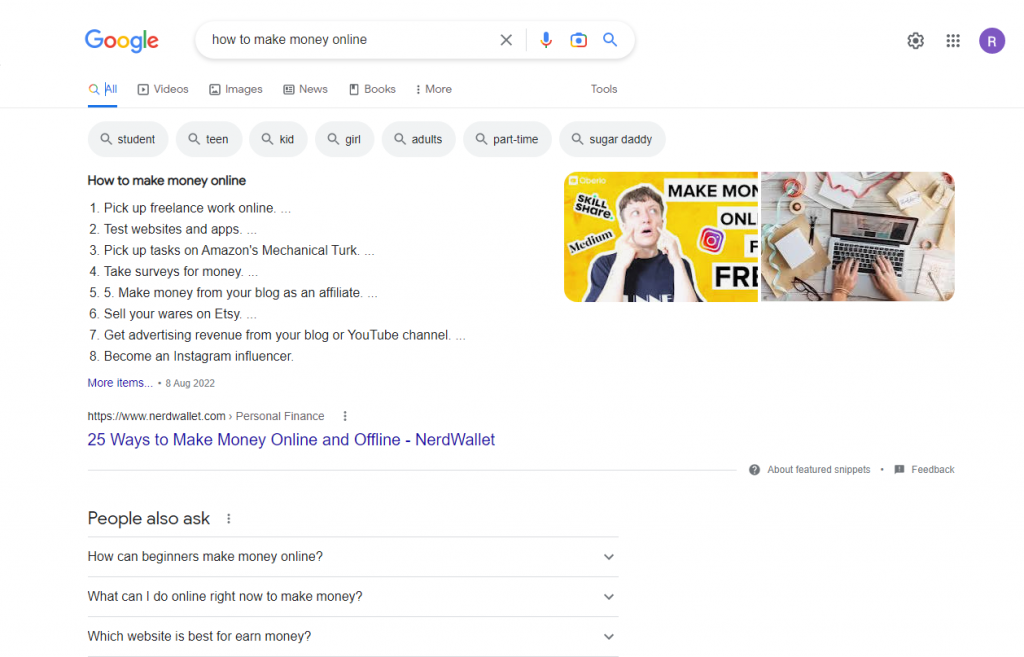
3. Table Featured Snippets
In this snippet type, searchers are able to visualize information for different types of comparisons. Google collects data from your site’s HTML elements, then compiles and displays it in the form of a table. And no, Google doesn’t display this data, just how it’s formatted. It can pull the specific information the searcher is looking for and recreates its table. Primarily the type of snippets is reserved for questions related to figures and statistics.
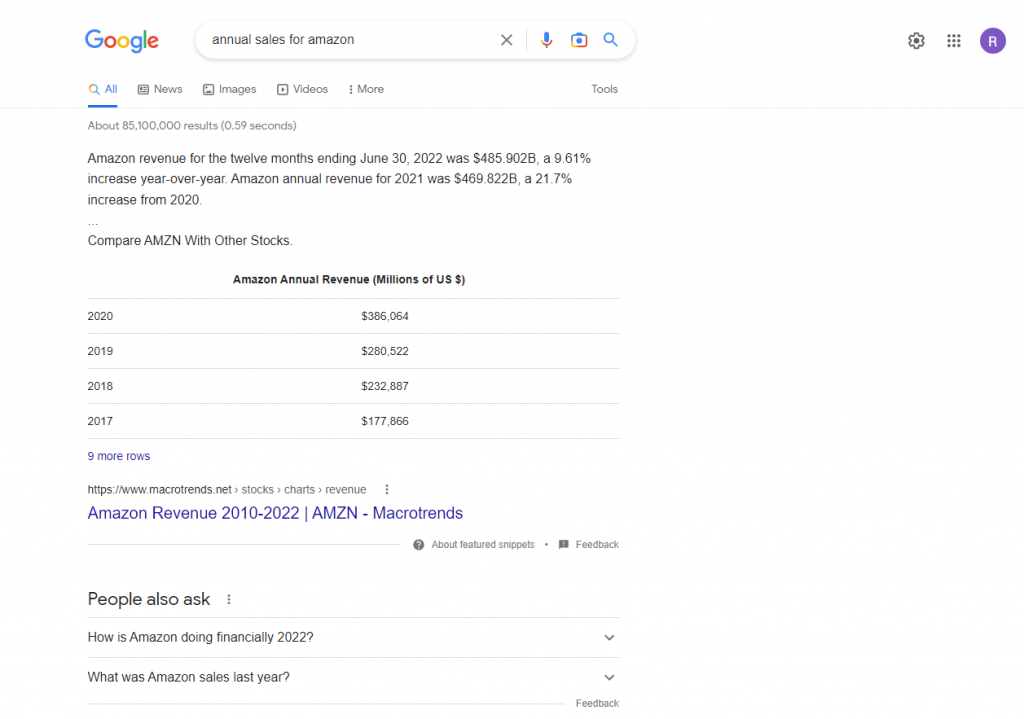
4. Video Featured Snippets
Sometimes, Google uses videos as featured snippets, mostly youtube videos, to answer searchers’ queries. If you optimize your videos for snippets, Google may display a specific clip from the video. The video featured snippets are made for any search questions that deserve a featured snippet spot, with the exception of tables(since it’s difficult to illustrate tables in a video format).
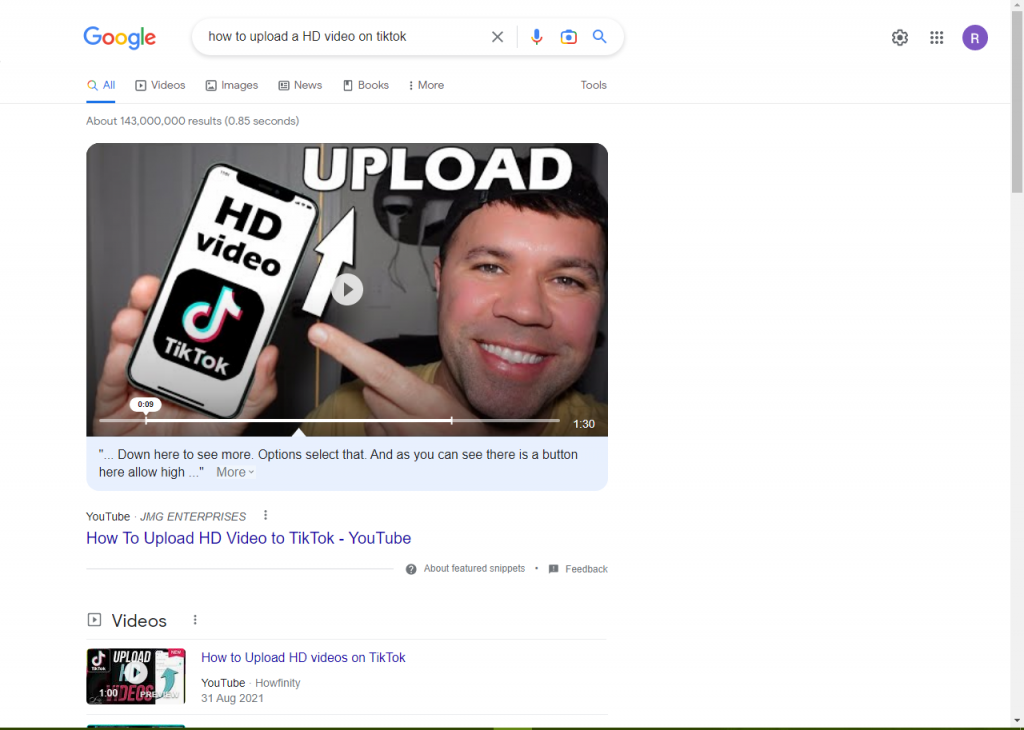
How featured snippet helps in SEO
Did you know that approximately 15% and 8% of U.S desktop and mobile search results, respectively, have a featured snippet? Featured snippets are golden tickets to the top of SERPs, above position one of organic results. Here are the reasons you should work hard to get featured in Google’s featured snippet boxes.
1. It improves click-through rates
Winning the featured snippet places your brand on top of Google’s SERPs; hence you get higher organic traffic and the highest click-through rate compared to other results. A featured snippet is attention-grabbing, and since it offers a direct answer, searchers are tempted to click it rather than scroll down. This is probably the main reason online businesses aim to be featured in the featured snippet spot.
2. It Increases brand awareness and boosts credibility:
Featured snippets dominate the search page and increase organic visibility. Did you know that the number one position gets approximately 34% of organic search traffic? If Google trusts your brand to feature it in the topmost position, then for sure, searchers will find your brand credible and trustworthy. This, in turn, drives more clicks to your site and increases brand awareness.
3. It increases website authority
One of Google’s key ranking factors is how much it trusts a site and the website’s authority. If you want to attract more users, use link building strategies, and increase the average time spent on your site via the featured snippet. By doing this the overall website authority is improved. If your blog is pulled into a featured snippet box, from the user’s point of view, you’re an authority on that particular topic.
4. It increases conversions
When you attract potential clients by answering their questions right there on the search page, their chances of taking action and increasing online conversions are generally increased.
How to have a chance to get featured?
While it’s one thing to optimize for Google’s featured snippet, if your website doesn’t rank on the first page of SERPs, your chances of winning the snippet spot are practically close to zero. In fact, a 2017 research by AHREFS found that approximately 99% of all featured snippets came from sites ranked on the first page of Google.
This makes sense because the first page in Google’s results pages is Google’s best and most trusted content for that particular topic.
So, it’s certain that Google can’t pull information from a website on page 10, even if it is structured and formatted perfectly.
The most featured site on Google’s snippets is Wikipedia.Org, and if it’s featured on your search query, it might be difficult to win the snippet, but it’s not impossible. There’s no harm in trying.
To increase your chances of getting featured, optimize your content for the right keywords and correctly format it so that you rank high on SERPs.
Secondly, perform a thorough research of the sites appearing on Google’s featured snippets to know what keywords they’re ranking for.
The most popular search queries whose answers get featured include:
- DIY
- Finance
- Health
- Mathematical etc
To sum it up, if you’ve content that directly answers most questions and ranks on the first page of Google, optimize it further to find a place in the famous ‘position zero.’
Identifying different opportunities to be featured
Winning a featured snippet is a simple way to improve your organic traffic. But how do you identify all kinds of opportunities to be featured in Google’s snippet box? Below, we’ll discuss a few ways.
1. Start with good old keyword research
Did you know that long-tail keywords have a high probability of getting featured in a snippet box? Just like optimizing your content for high organic search results, perform robust keyword research with the featured snippet in mind. You can perform your competitors’ best-performing keywords and queries to know their strengths and weaknesses.
2. Browse Google for more questions
Look at Google’s top queries that are related to your brand to know what type of information your audience is likely to be searching for. Browse through the ‘people also ask’ sections to get an insight into the questions that Google considers to be related to your brand.
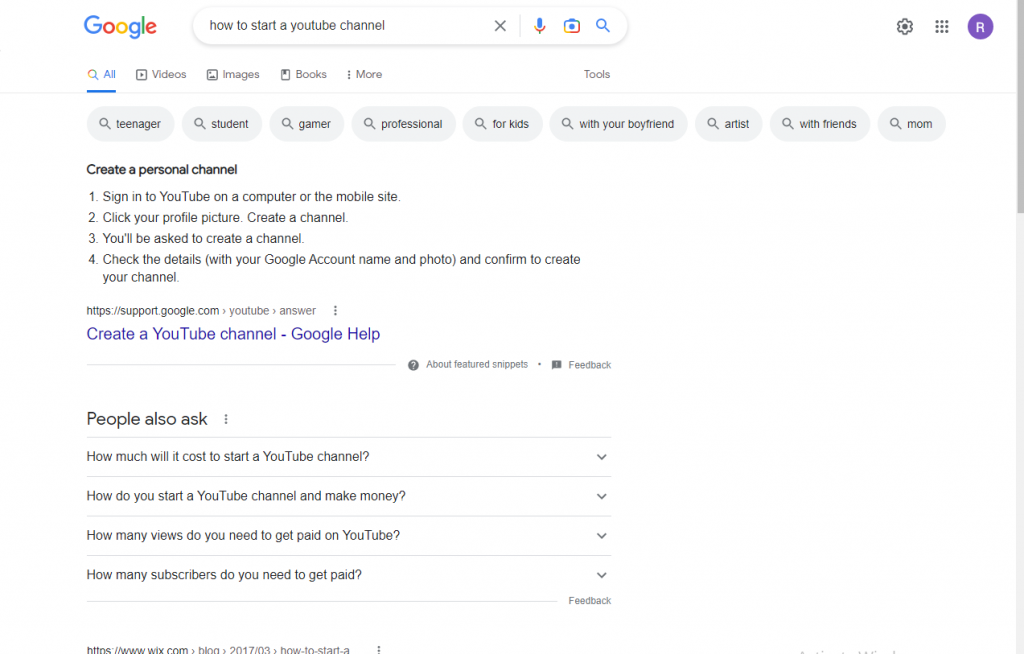
3. Identify search queries where you already rank high
From Google Search Console, establish the search queries you are high for and optimize them for snippets boxes.
4. Go beyond traditional keyword research tools
Ask people. Venture beyond the already discovered opportunities like inquiring from your followers, customers, friends, etc.
- Ask people outside your immediate reach. Ask any random person outside your target audience what questions they would ask on a given topic. You can also ask them what their concerns are about a specific topic. This gives you an idea of the questions to answer when creating and optimizing your content.
- Ask your friends and followers. Share a question or a scenario on your social media platforms and ask your followers and friends to answer with the keywords they would use to solve the issue. Be sure not to guide them to a definite search phrase.
There are a couple of free keyword research tools out there that can help you find the most popular keywords for your niche.
5. Monitor questions people ask on Twitter.
Monitoring Twitter searches helps you discover new opportunities that can help you get featured on snippets. Simply go to the search section, type your keyword, put a space, then include a question mark(?). You’ll see various questions that people ask on Twitter that are related to your search query.
How to optimize for featured snippets
The most common question marketers ask is how to optimize their content for featured snippets. Well, the foundation of perfect SEO still applies. Here are the various ways you can optimize for featured snippets in 2023.
- Perform robust keyword research and identify your competitors’ featured snippets. Use these keywords to optimize your content to ensure you rank high in organic results. Know their weaknesses and strengths and offer more in-depth content and add value.
- Use long-tail and question-based queries. Long tail keywords are likely to be featured in snippets. In addition, search queries formatted as questions are easy to identify and answer, hence having a high chance of getting featured in snippets. For example, the first H1 in Jobber’s Plumber Salary Guide is formatted as the question “How much do HVAC techs and managers make in the United States?” which helps its likelihood of being featured for that query.
- Understand your users’ intent and aim to answer their questions concisely. Most people use search terms in the form of questions when surfing the web. Therefore, create content that answers your searchers’ questions concisely. Aim to answer several questions in one article, including the answers in each section, including headers and subheaders.
- Be factual and structure your content correctly. Google loves well-structured content, including lists, numbered steps, comparison charts, etc. Format your content to fit the four types of featured snippets discussed above.
- Use eye-grabbing images. Search for currently featured images and optimize them for your site with more appealing text relevant to your keyword.
- Ensure you have a FAQ section in your content. A well-researched FAQ section increases your chances of winning the snippet box position.
Watch this video for more insights.
What’s new for featured snippets in 2023?
Recently, Google has been testing new layouts, interfaces, and formats for its featured snippets.
It’s believed that Google is currently testing displaying many featured snippets, which may impact your click-through rates.
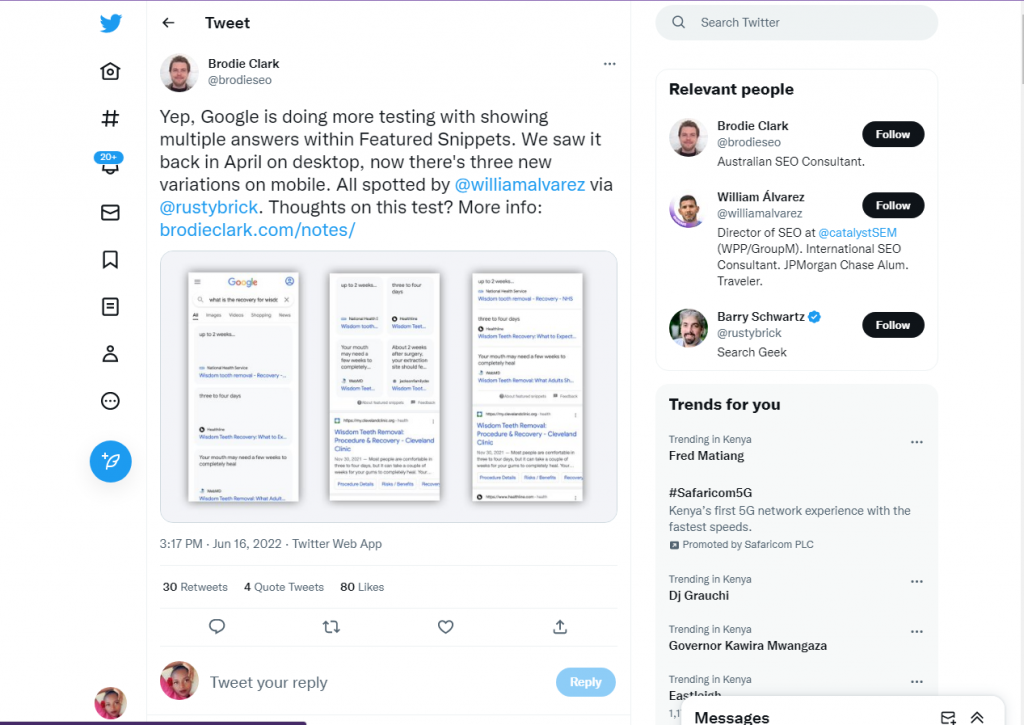
Frequently asked questions (FAQs) for Google featured snippets
Being featured at the top of Google search results is quite an uphill task for many online businesses. Below I’ve highlighted the most frequently asked questions about Google’s featured snippets that many SEO professionals seek to get answers to.
Why might featured snippets be removed?
Google might remove your featured snippet if it’s found to have violated its featured snippet policy. For example, a featured snippet can be removed if it contains the following:
- Sexually explicit content
- Dangerous content
- Terrorist content
- Manipulated media
- Vulgar language
- Violence
- Deceptive practices
- Hateful content
- Medical content
- Harassing content
Are featured snippets available for eCommerce products or category pages?
No. Google uses Product Listing Ads(PLAs) and Google shopping to feature eCommerce products. However, eCommerce websites can win featured snippets for blogs or guides.
Featured Snippets Vs. Rich Snippets: What’s the difference?
Simply put, featured snippets appear in position zero above the organic search results and provide quick and direct answers to user queries, while rich snippets are enhanced organic search results.
How do featured snippets work?
When Google receives a search query, it seeks to find the best answer that matches it. In a nutshell, when Google recognizes a query, it programmatically detects pages that best answer the searcher’s query and displays the top results as featured snippets on position zero of the search results.
Conclusion
Are you wondering how you’ll boost conversions, beat your competition and drive people to your site? Then, earning the Google snippet spot is your answer.
Google’s featured snippets could be the determining factor to drive an influx of customers to your online store. However, getting featured takes a lot of planning, research, and SEO strategies and tools to create content that adheres to Google’s featured snippet practice.
Organizing your content and performing robust keyword research helps you keep your site on the first page of Google.
Understanding the different types of featured snippets and implementing the above tips will help you receive massive traffic and brand awareness and increase your chances of winning this magic position.


